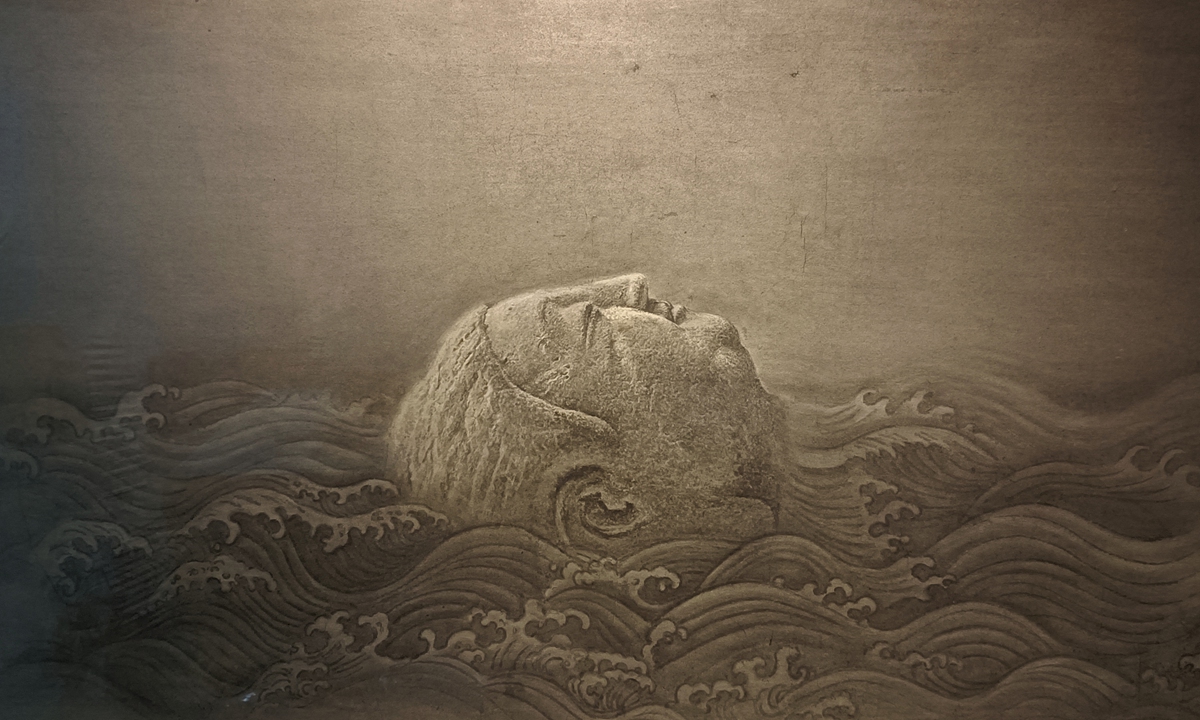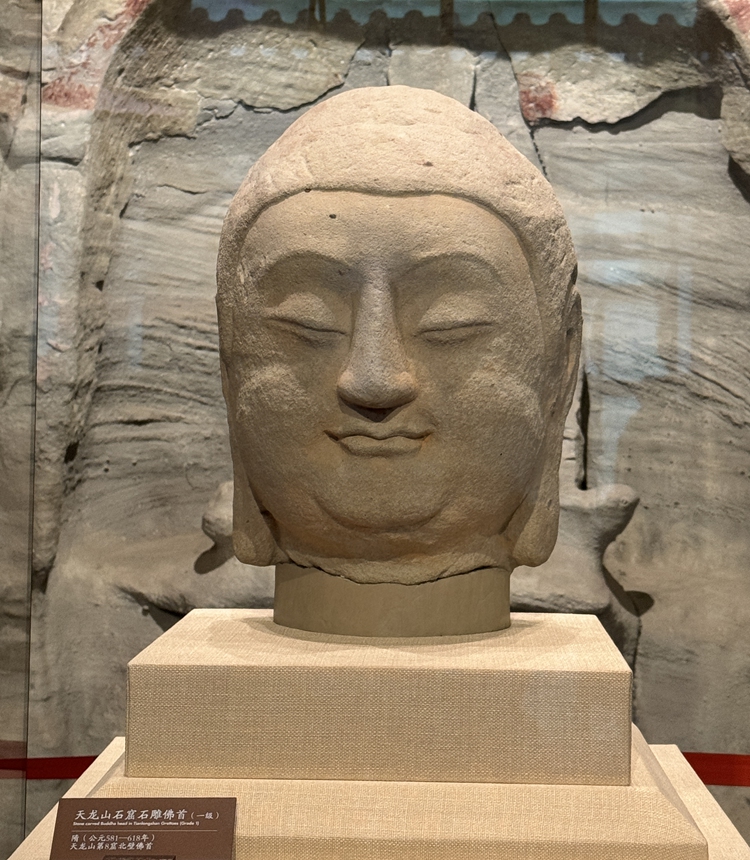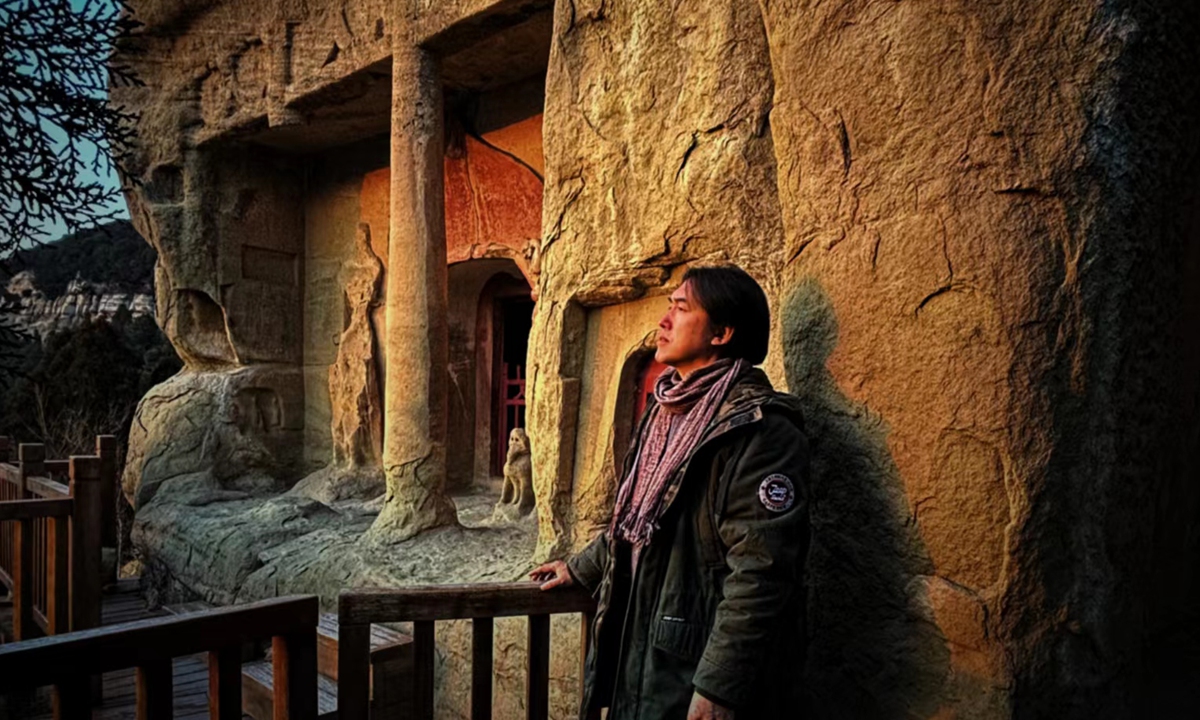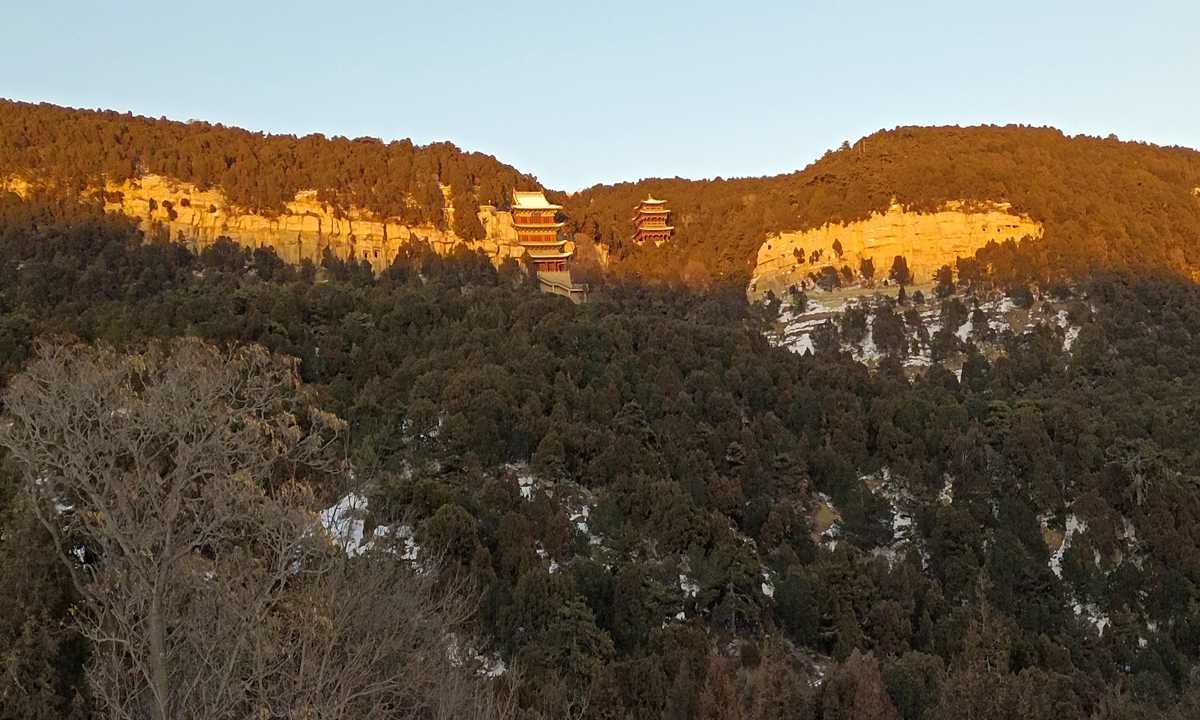
Artist Zhang Jinfeng's drawing of the Buddha statue from the 8th cave of Tianlong Mountain Grottoes Photo:Cao Siqi/Global Times
Tianlong Mountain, located in Taiyuan, capital of North China's Shanxi Province, is not just a mountain. It is a symbol of exquisite stone carving art and distinctive regional style.Over nearly 400 years during the Eastern Wei (534-550), Northern Qi (550-577), Sui and Tang (581-907) dynasties, Chinese craftsmen created magnificent treasures here, showcasing the peak of cave art in Chinese civilization.
However, this mountain also faced brutal looting. More than 240 statues from Tianlong Mountain Grottoes were stolen and over 150 of them are scattered in Japan and various countries in Europe and the US, becoming treasures in foreign museums and private collections.
This is not just a disaster for human civilization, but also a permanent pain in the hearts of the Chinese people.
Since 2011, Zhang Jinfeng, a local painter, has dedicated years of his life to restoring the lost Tianlong Mountain artworks to their hometown through his works. Using ink and wash painting techniques and a combination of Eastern and Western styles, he has painstakingly created over a hundred paintings of Buddha statues.

The Buddha head from the 8th cave of the Tianlong Mountain Grottoes in Taiyuan, North China's Shanxi Province, is now on display at Taiyuan Museum. The Buddha was brought back from Japan in 2020 after being lost overseas nearly a century ago. Photo:Cao Siqi/Global Times
During the 2021 CCTV Spring Festival Gala, an unplanned segment evoked the audience's strong emotions and resonance: A Buddha head lost overseas for nearly a century was displayed on a large screen, bringing a smile to millions of viewers. This 25-kilogram Buddha head, with a round face, slightly closed eyes, and tightly closed lips, exuded a mysterious smile.This Buddha head originated from the 8th cave of Tianlong Mountain. As a precious physical specimen for studying the Tianlong Mountain Grottoes and ancient cave art in China, it holds both cultural and research significance.
Back in 2018, a picture of a Buddha head from the 8th cave that had been lost overseas made an appearance at an art exhibition in Taiyuan Museum. The artifact, lying flat with a gentle and confident expression, slightly closed eyes, and a faint smile on its lips, seemed to have foreseen its return.
At a painting exhibition held at the Tianlong Mountain Art Center, Zhang told the Global Times about the stories behind each Buddha statue painting.
He pointed out "a painting of the Buddha head from the 8th cave was titled 'Return.' The flowing water in the background symbolizes the Buddha statue lost overseas, as well as the hope for its early return."
Zhang hopes to use paintings to rekindle everyone's longing for Chinese statue art. Of course, he also hopes that cultural relics can be returned, as Tianlong Mountain is their rightful home.

Artist Zhang Jinfeng poses for a photo in front of the Tianlong Mountain Grottoes. Photo:Cao Siqi/Global Times
Passion since childhoodZhang, born in Dajingyu village 20 kilometers from Tianlong Mountain, has been deeply fascinated by the beauty of the Tianlong Mountain Grottoes since childhood. It wasn't until he visited Tianlong Mountain in his 20s that he was disappointed to find many caves had been looted.
He said a Japanese scholar came to China in 1917 under the guise of scientific research, but possibly intended to survey the terrain of Shanxi in preparation for an invasion of China. His instinct as a scholar led him to discover the Tianlong Mountain Grottoes. He published the drawings of Tianlong Mountain, causing a sensation worldwide. Seeing such exquisite statues, some unscrupulous individuals began to think about having the relics to themselves.
Tianlong Mountain created a miracle in the Tang Dynasty. But now, people can hardly see a complete Buddha statue in Tianlong Mountain anymore.
Zhang decided to paint the Buddha statues lost overseas. Over the past years, due to economic reasons, he could only rely on searching for image data on the internet, in books, or asking friends to take photos for him to create his artworks.
He mentioned that his Buddha statue paintings have resonated with the local Chinese communities during exhibitions in Malaysia and Singapore, and have also been bought by collectors from the island of Taiwan.
Among his many works, a full-length portrait of a Buddha is a stellar. The Buddha sits cross-legged, with a sharp knife mark on its neck, indicating its troubled fate. Next to it, an ink painting depicts the original site of the statue, which is now empty except for the marks left by the stolen statue.
Zhang pointed out the cave where the Buddha sits to the Global Times. "To make this portrait more vivid, I took a close look at the cave by climbing onto a steep cliff. It was definitely worth it as when the sunset shone its light on the cave, I felt that the Buddha was alive," Zhang remarked.
In future, Zhang said he plans to focus on painting the ancient village architecture of Shanxi. In Shanxi, ancient buildings hold a significant position in the category of cultural relics. As of early 2023, the province has a total of 28,027 ancient buildings, 420 of them are key national cultural relics. These ancient buildings, scattered like stars throughout Shanxi, embody rich folk customs and unique regional culture.
The ancient buildings are a "golden business card" for Shanxi tourism.
More and more dormant cultural relics and ancient buildings are "awakening," becoming important ways for tourists to experience the charm of Shanxi. Shanxi's folk culture is a microcosm of Chinese culture and an important continuation of traditional Chinese culture, Zhang said.

Tianlong Mountain in Taiyuan, capital city of Shanxi Province Photo:Cao Siqi/Global Times

